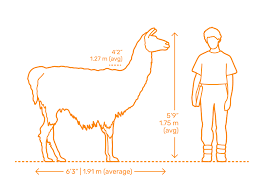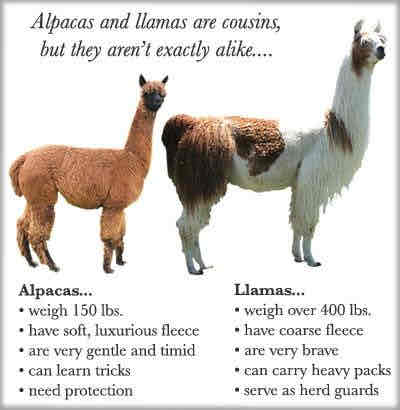Other Farm Animals: Llamas&Alpacas Ostriches&Emus
1/73
There's no tags or description
Looks like no tags are added yet.
Name | Mastery | Learn | Test | Matching | Spaced |
|---|
No study sessions yet.
74 Terms
What are llamas purposes?
South American camelids bred for fiber, pack animals, livestock guardians, and sometimes meat
Stud
Male llama
Dam
Female Llama
Curia
Young llama and alpaca
Macho
Male alpaca
What are alpacas bred for?
South American camelids bred primarily for their luxurious fiber
What are ostriches bred for?
Large flightless bird native to Africa, bred for feathers, leather, meat, and oil
Male Ostrich
Cock
Rooster
Male Emu
Hen
Female ostrich and emus
Chick
Young ostriches and emu
Purpose of emus?
Large flightless birds native to Australia, bred for feathers, leather, meat, and oil
Purpose of American Plains Buffalo (bison)?
Semi-domesticated bovine species raised for meat, hides, and heads
Bull
Male Bison
Cow
Female Bison
Calf
Young Bison
What is the classification of llamas and alpacas?
Members of the camelidae family, modified ruminants with three-compartment stomachs
What are a few physical characteristics of llamas and alpacas?
Hornless, cloven-hoofed, padded feet, and chew their cud. Adaptable to diverse climates
What is the weight of llamas?
280-450#
What is the height of llamas?
To the shoulder: 40-45 inches
To the head: 5.5-6 feet tall

What is the lifespan of llamas?
15-30 years
Specific purposes of llamas?
Burden carrying, fiber, guarding livestock, and meat
Describe the fiber on llamas
Shorn annually and have a double coat consisting of a fine wool fiber intermingled with stiff guard hairs. Contain no lanolin/grease!
Describe how llamas are livestock guardians:
used to guard cattle, sheep, and poultry. Inherent wariness of dogs. Gelded males are used (stud)
Weight of an alpaca?
100-175#

Alpaca height to their shoulder is ______
3 feet
What is the lifespan of alpacas?
15-25 years
What are the two types of alpacas?
Huacaya: The most common, contain a fluffy appearence due to the fibers forming a locked structure
Suri: Less common, hair hangs down in curly ringlets. has a sleek look
What is the primary use of alpacas?
Primarily used for fiber, used for meat in South America
Describe alpaca fiber:
Lanolin-free, no guard hairs, warmer than sheep’s wool, produces 6-9# a year per adult
Both llamas and alpacas are __________. They ovulate ______ hours post-breeding
Induced ovulators; 24-36 hours
When do llamas and alpacas wean?
4-6 months
When are Dams bred? (Female llama)
15-18 months of age
When are studs (male llamas) turned out with female llamas (dams)?
2.5 years of age
How long do dams gestate for?
350 days
How much does cria weigh from a dam (female llama)?
20-35 #
Hembras (female alpaca) give birth to a single cria (twins rare) at what weight?
15-19 #
At what age are hembras (female alpacas) bred?
14-16 months of age
When are machos (male alpaca) turned out with hembras?
2-3 years of age
How long are hembras in gestation?
335 days
What are all of the different type of ratites? (5)
ostriches, emus, rheas, cassowaries, and kiwis
What is the classification of ostriches and emus?
Ratites lacking a keel bone where flight muscles usally attach
What is the origin of ostriches?
Africa
What is the origination of emus?
Australia
How tall are ostriches?
7-10 feet
How much do ostriches weigh?
250-400 #
How many toes are on an ostrich?
2 per foot
How tall is an emu?
5-6 feet
What is the weight of an emu?
110-150#
Ostriches and emus can run up to:
40 MPH
When do ratites begin to reproduce?
2 and 3 years of age
What is the annual egg production for ostriches?
40-60 eggs
What is the annual egg production for emus?
20 to 50 eggs
How long can ostriches reproduce for?
40 years
How long can emus reproduce for?
20 years
How long is incubation for ostriches?
6 weeks
Describe how eggs are cared for in a communal nest with ostriches?
Dominant female will sit on eggs during the day, cock will sit during the night. Non-dominant can do whatever
The emu rooster sits on the nest continually for ______
50 days
What is the laying season for ostriches?
March-October
When is the laying season for emus?
November-April
What are the products of ostriches and emus?
Leathers, feathers, meat, oil. Meat is leaner, richer in iron, vitamin C, and protein compared to beef. Emu oil used in cosmetics and pharmaceuticals
Classification of Bison?
American Plains Buffalo, only semi-domesticated
What are characteristics of Bison?
Adaptable, need to be worked slower, calmer, and quieter than cattle. Must be tested for bovine tuberculosis and bovine brucellosis when shipped since they are suspectable to cattle diseases
How much is a mature cow (female bison)?
1,000-1,500 #
When do cows begin to reproduce and how often?
Cows can be bred at 2 years of age and can reproduce every year
How long is gestation for cows?
280-285 days
How much do calves weigh at birth?
40-50 #
Breeding season of calves?
August-October
Bulls weigh _______ and are used for breeding at _____ years of age
2,000#, two years
One bull can reproduce ______ cows
10-15
The average bison can reproduce for _____ years
20
At what weight and age are bison butchered?
950-1,250#, and between 18-36 months of age
The average dressing percentage of bison is ______%
57%
How is bison meat different than bovine?
Bison meat has a lower fat content (less than 3%) and a lower cholesterol content